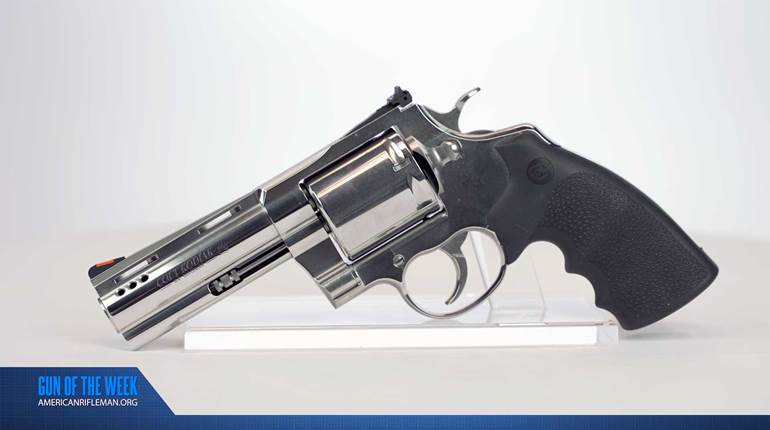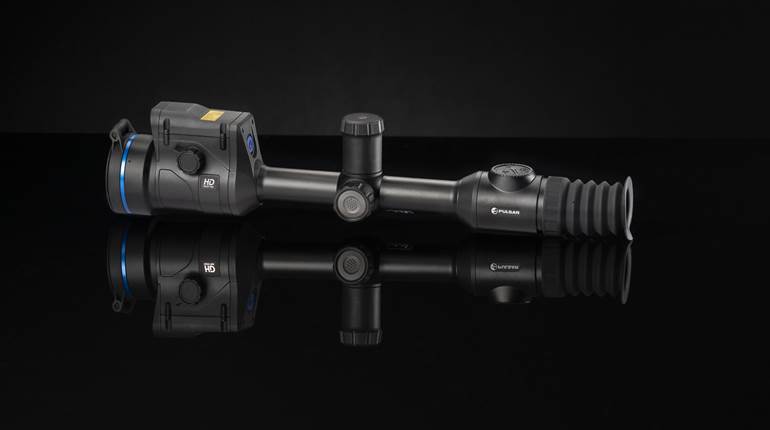While infantry muskets were largely standardized during the American Civil War, cavalry units used an incredible variety of different designs, with the Union cavalry employing dozens of different models during the war. One such gun, the Gallager carbine, is one of the war's lesser-known designs, but it still saw service in the hands of Union trooper and others. Watch our "American Rifleman Television" I Have This Old Gun segment above to see this unique carbine in action.
"During the war, the government contracted for about 18,000, close to 18,000 of them. But it was actually invented by a Southerner. And he invented it, Mahlon Gallager, he was a Georgian, but he was living in South Carolina at the time when he patents it in the summer of 1860," American Rifleman Contributor Kenneth L. Smith-Christmas said. "He sells his patent to Richardson & Overman in Philadelphia, because of course, most all of the firearms manufacturing in the U.S. at that time, aside from single-shot hunting rifles, is really happening up north."

By 1861, Richardson & Overman were in production and had secured a contract with the U.S. government, which was desperately purchasing any kind of arms they could in order to equip the rapidly growing Union Army.
"The Gallager carbine is designed as a .52-cal. breechloader," American Rifleman Executive Editor Evan Brune said. "It's a single-shot breechloader. It's got this serpentine-style lever underneath the gun that also functions as a trigger guard. And so when you hinge the lever open, the entire breech kind of pivots up and forward on the pivot pin, thereby exposing the breech. Now the Gallager fired a pretty modern cartridge for its time. It was, generally speaking, a self-contained cartridge, uh, with a foil wrap, later brass-cased, and this contained the projectile and it contained the powder. What it did not contain, however, was a, an ignition source, a primer."
This classified the Gallager as one of many so-called "capping breechloaders," like the Sharps and the Maynard, which were an intermediate step between muzzleloading arms and fully self-contained metallic cartridge arms. However, the Gallager had an issue that many other capping breechloaders didn't experience.

"The problem with the Gallager, the biggest problem, once that .50-cal, round goes off and you open the gun, was extracting the cartridge," NRA National Firearms Museum Director Philip Schreier said. "It didn't have an extractor. And of course, the mouth of the cartridge is going to expand into the chamber of the gun, and especially with blackpowder fouling, you had real issues trying to get the case out of that gun."
Eventually, an extraction system was retrofitted into the Gallager, along with a metallic cartridge, and the design matured to become one of many breechloading arms available to commercial and military buyers following the Civil War.
"To take into battle with me, the Gallager is not at the top of the list," American Rifleman Field Editor Garry James said. "Obviously the Sharps or the Spencer would be. Obviously, Gallager kind of recognized this, because towards the end of the Civil War, he modified his gun to take the .56-52 Spencer metallic cartridge and fitted the gun with an extractor. So even though these guns never actually saw it into service, they were a definite improvement over the original piece."
 Thick blackpowder fouling greatly complicated the extraction issues experienced with the Gallager carbine.
Thick blackpowder fouling greatly complicated the extraction issues experienced with the Gallager carbine.
One customer for the remaining stock of Gallager carbines was the French Empire, which was in desperate need of additional arms during the Franco-Prussian War. The New York City firm of Schuyler, Hartley & Graham sold 2,500 surplus guns to the French.
"I have not read any accounts of the French actually using the guns, however, probably the words "Sacre Bleu!" would have come up many times in the battlefield by anyone that had to wield the darn things," James said.
To watch complete segments of past episodes of American Rifleman TV, go to americanrifleman.org/artv. For all-new episodes of ARTV, tune in Wednesday nights to Outdoor Channel 8:30 p.m. and 11:30 p.m. EST.























